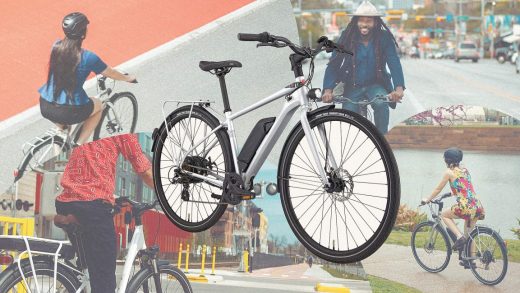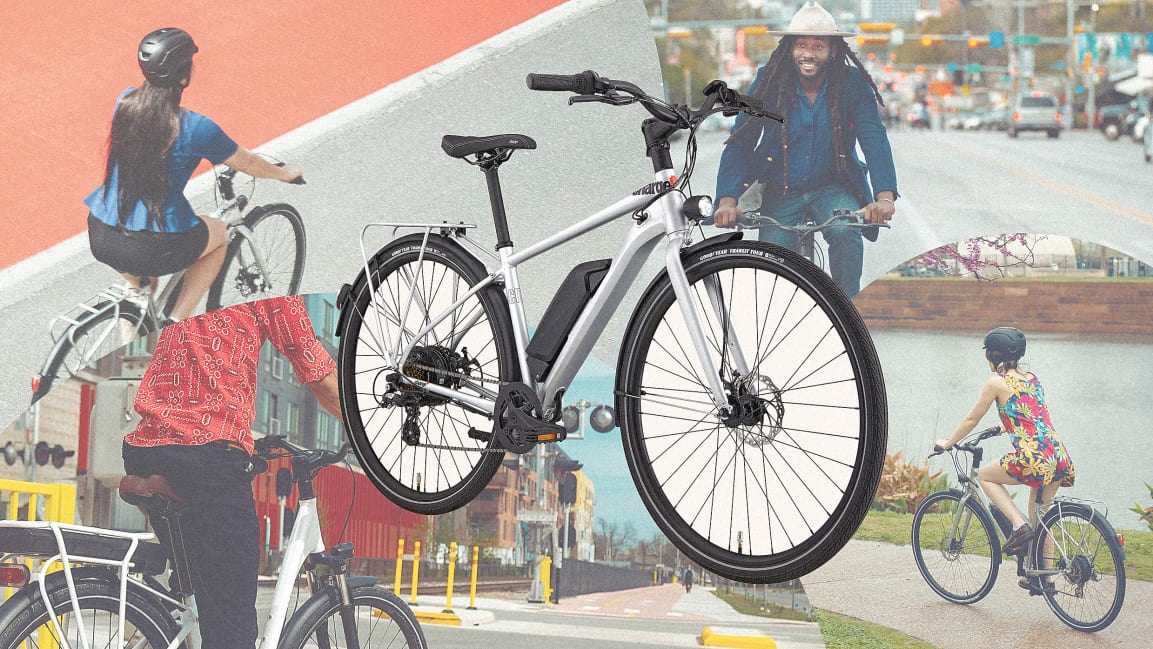This $1,500 electric bike ships right to your door
When I walk to my porch, I wonder who ordered the 85-inch TV. This gargantuan box is sitting there, and it’s heavy enough that I’d prefer not to move the thing alone. That’s when I realize, it’s not a TV. It’s a mostly assembled bike.

This is the Charge City. It’s a $1,500 e-bike with a range of about 50 miles, built for commuters who want to bike but would prefer not to sweat too hard on their way to work. The City seems geared to contend with Rad Power Bikes, a line of e-bikes that costs around $1,500. While Charge claims it’s lighter and less expensive than most bikes in its class, Charge is notable for another reason: It’s a new direct-to-consumer brand overseen by Dorel Industries, a conglomerate that owns Cannondale, GT, and Schwinn. And in the world of bikes, this is radical thinking.
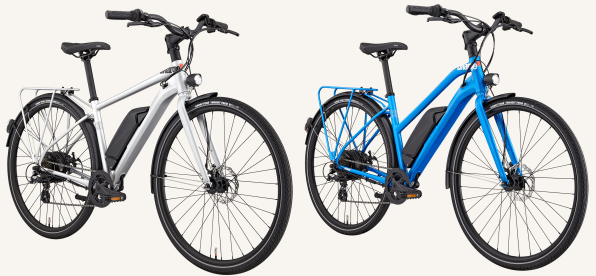
The cycling industry is one of the last remaining holdouts in the age of Amazon. While pretty much any product you want can arrive at your door in two days or less, bikes are different. The big bike brands you know such as Cannondale, Trek, and Specialized are sold through dealers, much like cars. And these partner bike shops perform an important task: They professionally assemble bikes shipped in countless pieces, precisely tuning components like brakes and derailleurs for safe riding. As COVID-19 spread across America and bike demand nearly doubled overnight, some companies allowed you to buy a bike online for the first time—but you still had to go to a bike dealer to pick it up.
As I’ve picked up cycling again in the last few months, I’ll admit that I’ve grown to despise a few of my local bike shops. Despite being the small businesses I should support, they’re busy, salesman-y, elitist, and surprisingly incompetent at answering questions or fixing problems.
Nick Larsen, vice president of global creative of Cannondale and Charge, who founded Charge back in 2004, knows exactly the sort of bike shop experiences I’m talking about. “My goal was to make bikes unintimidating to the customer . . . focus on quality product at a low price point,” he says. One decision he made was that his bikes should avoid feature creep, and just be good to ride. “Having 21 gears and suspension forks at a low price point . . . was pretty shit.”
Charge offered a small line of simpler bikes with less features, aimed at casual riders and urban commuters. It focused on doing a few things well, like creating a more comfortable seat, stitched together like a shoe. Seats alone became half of the company’s business, and it had a good run for about a decade until the market caught up. (Today, simpler bikes with single gears are a mainstay across the industry.)
Along the way, Dorel Industries bought the Charge brand, and transitioned it from a U.K. business to a U.S. one. Charge decided to make the switch to electric bikes in 2018, and began development. “We made sure to maintain the brand name,” says Larsen. “I always thought it would be great for e-biking.”
Building an e-bike for a box
Two years ago, Larsen began to redevelop Charge as a direct-to-consumer e-bike. The bike needed to ship built, or mostly built, to consumers, which meant it needed to fit in a shippable box.
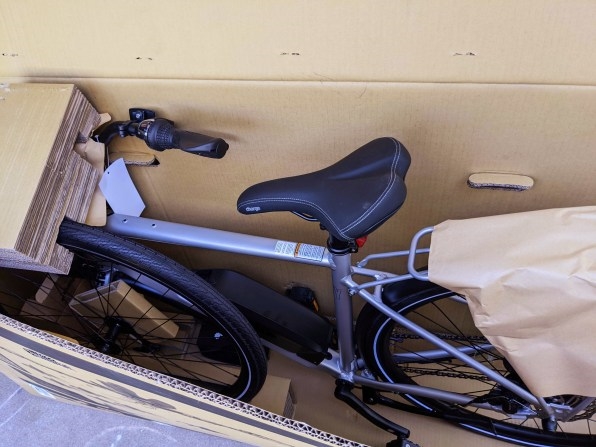
Because of USPS shipping dimensions, Larsen’s team found that any bike is a few too inches long to be sent fully assembled. So they designed the Charge to fit into the box.
The biggest challenge was the handlebars, which are the widest part of the bike. It had to redesign the handlebars to flip out a few inches during installation in order to squeeze into the box.
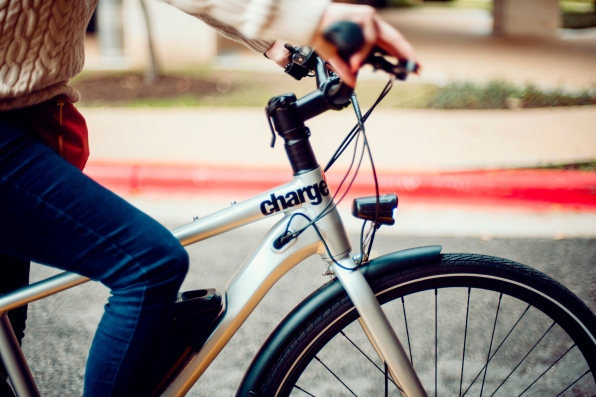
“Assembling handlebars is actually a really dangerous thing to get wrong on a bike,” says Larsen. After all, a person leans a lot of weight on the handlebars and relies on them for accurate steering. Larsen says he’s never seen folding handlebars in a mass manufactured bike.
The team also designed the bike’s next widest point, the pedals, to fold in half. It sounds like a small detail—they’re just pedals! But these considerations allow the bike to condense down to just 6 inches wide for shipping—or even storage in a tight apartment. When fully set up, it’s 32 inches wide.
Installation is simple
I was skeptical of just how simple the unboxing and assembling would be. Charge claims the process takes just 10 minutes. That might be a slight exaggeration, but it certainly took me less than 20.

Charge designed its heavy duty, giant shipping box with integrated pull tabs to open the box in the right way. Clear instructions are printed right on the outside, pointing the way to pull. It takes some effort, but the sensation is essentially like unzipping cardboard. You then slide the entire bike out, which sits upright in its own cardboard tray. It’s neat and tidy.
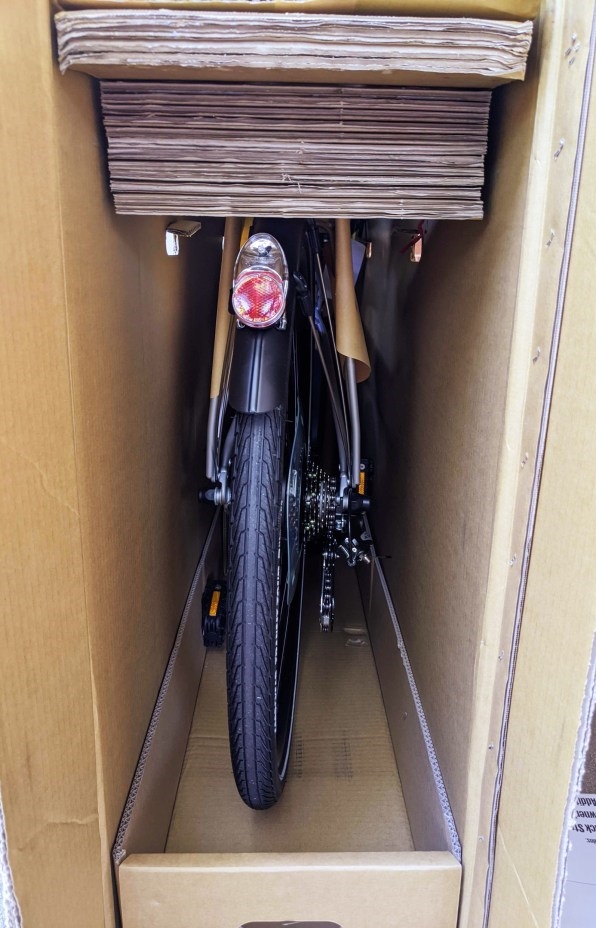
“I feel like when you walk into Ikea, when you see a piece of furniture on the shop floor, you say, ‘This is great!’ Then it shows up and it’s like, ‘Shit, I have to put this together!’” Larsen laughs. This Ikea bait and switch is exactly what Charge is trying to avoid.
The bike is 95% assembled, but the most difficult task for most new bike owners will be putting on the front wheel. So the box is designed to help: Part of the tray actually holds the front wheel upright, which you place the bike onto without cursing. The one tool you need to tighten the wheel is, of course, included in the box.
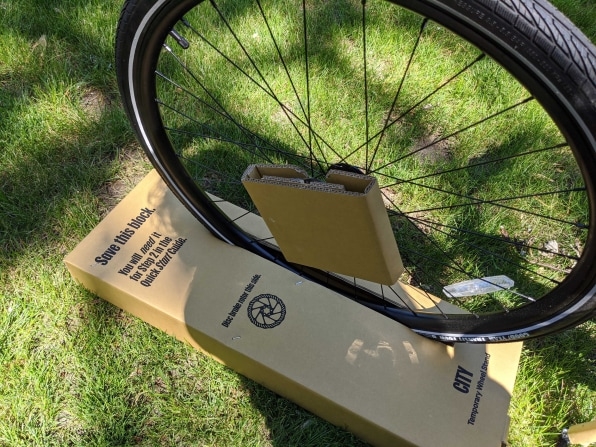
How does the Charge ride?
Admittedly, it was my first time on an e-bike, so I can’t compare it to much. I was surprised how much heavier it is than a modern aluminum bike. At 45 pounds, the City is about twice the weight of a similarly sized non-electric bike. That weight makes it hard to roll and lift in and out of a garage (the bike doesn’t roll backwards), and a serious task to carry upstairs. I noticed how comfortable the seat was, and appreciated the wide, flat palm wrests on the handlebars—an ergonomic touch I’d never seen on a bike, which makes it instantly inviting to ride.

It pedals like any other bike you’ve ridden, but you can feel a small motor giving your back tire a shove. You control the motor’s level of assist with a numbered keypad by your left hand. You can also drive the bike like a moped, hitting a throttle and not pedaling at all. The entire experience feels like a cheat code for cycling, especially as I approach small hills without the slightest fear of work. But despite the bike’s extra power, like all e-bikes, it’s not built for speed.

The gears are designed for climbing hills rather than hitting high velocity on flats, and the motor is limited to 20mph—a legal requirement in many areas. That means when you start to really get going, even pedaling on your own, that motor fights you to keep your speed down. Which is a shame, because the bike really is a blast to ride. I found myself smiling at the effortlessness of darting down streets on a perfect summer day.
Personally, I might get the appeal if I biked for commuting instead of exercise, and any vehicle that can get more cars off the road is good news to me. But what I mostly appreciate is that this whole direct-to-consumer business model works for a bike. And I sure hope that I can buy my next, non-electric, bike just like this.
(26)

